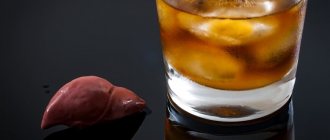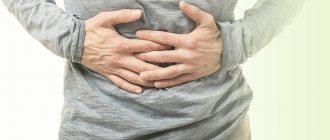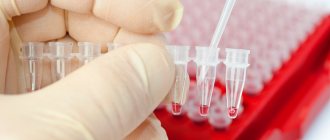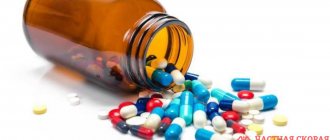From our school human anatomy course, we remember that the liver is the largest digestive gland in the human body, as well as one of the main “filters” in the body, protecting us from toxicants. Pathological processes in the liver can be divided into several classes. The first is the actual effect of toxic substances (alcohol, some drugs, chemicals, etc.). The second is exposure to viruses. The third is conditions associated with dystrophic changes in hepatocytes (fatty and pigmented hepatoses). In addition, some conditions are accompanied by difficulty in the removal of bile and its “stagnation” in the bile ducts (cholestasis), including inside the liver. Since a person is constantly exposed to factors unfavorable for the liver, many people subconsciously want to “support” or “treat” this organ. These people often come to the pharmacy for advice. Our guide is intended to help the chief captain competently advise such a visitor and help him choose an effective medicine for the liver.
Hepatoprotectors are a whole class of drugs of various origins designed to support the functional abilities of the liver, restoring damaged cells and increasing their resistance to toxicants.
Strictly speaking, at the moment there is no single generally accepted classification of hepaprotectors. Here is the division option most used in practice (1, 2):
Classification and characteristics of hepatoprotectors by type of origin and primary mechanism of action
| Herbal preparations | Based on milk thistle. Licorice based. Based on other plants |
| Preparations of animal origin | Based on animal liver. Derived from placenta |
| Preparations based on essential phospholipids | Based on essential phospholipids. Combination preparations containing essential phospholipids |
| Preparations with a predominantly detoxifying effect | With a predominantly direct detoxifying effect (ornithine aspartate, arginine glutamate). With a predominantly indirect detoxifying effect:
|
| Bile acid preparations | Ursodeoxycholic acid |
| Drugs of other groups | Thioctic acid. Vitamins and antioxidants |
Content:
- How does alcohol affect liver tissue?
- Clinical picture
- Principles of therapy
- The importance of diet
- How to treat the liver after heavy drinking? Effective medicines
One of the functions of the liver is to neutralize toxic substances. But in an alcoholic, this organ can also suffer from toxins. What medications are prescribed to treat the liver after heavy drinking? There is no magic pill, therapy is complex: in addition to synthetic drugs, plant-based medicines, as well as diet therapy, are important. This will be discussed in our article.
"Detox" for the liver
Drugs with a detoxifying effect, strictly speaking, are not hepatoprotectors, but are also used for liver diseases to reduce the formation of toxic substances or speed up their disposal. There are drugs with direct and indirect action. The direct detoxifying effect is to increase ammonia metabolism in the liver and brain and, as a result, reduce hepatic encephalopathy. Drugs with indirect action reduce the formation of endogenous toxins, accelerate their metabolism or stimulate the production of substances associated with the elimination of toxicants.
Interestingly, some members of this class have been described to have additional therapeutic effects, making them very effective drugs for the liver—for example, the high antidepressant activity of ademetionine and methodoxin (available by prescription). However, more research into these effects is required (1, 2, 3, 6).
The drug ornithine aspartate, according to the manufacturer's commentary, is included in the ornithine urea cycle, which reduces the level of toxic ammonia in the body (direct detoxifying effect). In addition, its positive effect on protein metabolism is described. However, the drug cannot be used in cases of severe renal failure and during lactation. Use with caution - in pregnant women (1, 2, 3, 5, 7).
A similar mechanism of action is described for the drug arginine glutamate - acceleration of ammonia utilization in the urea cycle, binding of ammonia into non-toxic derivatives, acceleration of its excretion, as well as antioxidant, antihypoxic and membrane-stabilizing effects, activation of ethanol metabolism. At the same time, the drug can enhance the effect of antiplatelet agents and weaken the effect of the antitumor drug vinblastine. There have been no studies on the safety of its use during pregnancy and lactation (1).
How does alcohol affect liver tissue?
A daily dose of ethanol has been established at which pathological changes begin in the liver parenchyma - for males it is 40 grams, for females it is half as much.
Harm is caused not only by a large amount of “fire water” drunk in a short period of time - cells suffer if you consume alcohol in small doses, but often. Before treating the liver after heavy drinking, you should find out what the patient’s “alcohol regime” was - further prescriptions may depend on this.
Ethyl alcohol and acetaldehyde negatively affect intracellular structures. As a result, the structure of hepatocytes is disrupted and the functions of the organ suffer.
Due to the effects of ethyl alcohol, cells are literally poisoned, the production of intracellular energy is disrupted, and the process of fat processing suffers.
The consequences of the negative effects of acetaldehyde are as follows:
- oxygen starvation of cells occurs;
- compounds are formed to which the body reacts as if they were foreign and tries to destroy them in order to protect itself - the consequences of such a reaction can be quite severe.
Bile acids for the liver
Another important group of pharmaceutical products for the liver are bile acid preparations (ursodeoxycholic acid, UDCA), which have a wide spectrum of action (available by prescription). Several beneficial effects are described for them:
- protection of liver cells from death;
- suppression of fibrosis;
- choleretic effect;
- prevention of the formation of gallstones.
UDCA reduces the concentration of toxic bile acids in the hepatic ducts, stimulates their excretion, and also reduces the saturation of bile with cholesterol and reduces the lithogenic index of bile. It is stated that UDCA molecules are embedded in cell membranes and protect them from the action of toxic bile acid salts, which, in fact, causes a hepatoprotective effect. In general, hepatoprotectors based on ursodeoxycholic acid are well tolerated, but unwanted drug interactions are possible - for example, possible increased absorption of the immunosuppressant cyclosporine or decreased absorption of the antibiotic ciprofloxacin. In addition, additional studies are required to confirm the effects of UDCA from the perspective of evidence-based medicine (1, 2, 3, 5, 8).
Clinical picture
With the described disorder, the following clinical symptoms occur:
- nagging constant, periodically intensifying pain under the costal arch on the right;
- bitter taste in the mouth;
- deterioration and complete lack of appetite;
- nausea with urge to vomit;
- diarrhea;
- signs of jaundice: a characteristic shade of the skin, visible mucous membranes, darkening of urine (it becomes like beer), discoloration of feces (it can even turn white).
Indications for use of drugs
Anyone can benefit from a liver cleanse. Residents of megacities and those who do not watch their diet especially need this. Malfunctions of the organ affect the condition of the skin: bags under the eyes and rashes appear. Black or brown dots can be seen above the eyebrows. In addition, characteristic features include:
- white coating on the tongue;
- belching sour, bitter;
- yellowing of the skin;
- pain in the right hypochondrium;
- nausea after eating;
- decreased appetite;
- bloating, feeling of heaviness;
- bleeding gums;
- the appearance of moles, warts;
- dry skin;
- redness of the whites of the eyes.
Cleansing with medications should be carried out by people who often drink alcohol or have cirrhosis, cholecystitis, or hepatitis. It is important to perform this procedure even after treatment with heavy drugs - antibiotics, hormones. Medicines for cleansing should be prescribed by a doctor. It is dangerous to choose them and start taking them on your own. This is especially true for compounds with a strong choleretic effect. Liver cleanses can also help you lose weight because this procedure:
- speeds up metabolism;
- removes toxins;
- improves fat metabolism;
- normalizes digestion.
Principles of therapy
Liver tissue is extremely delicate. If treatment is delayed due to alcoholism, the consequences can be critical - even organ failure, and this can lead to death.
An integrated approach is important for treating the liver after heavy drinking. The important ones are:
- complete cessation of drinking alcohol;
- diet therapy;
- drug therapy;
- prescribing herbal-based drugs.
If signs of withdrawal (withdrawal syndrome) are observed, drinking alcoholic beverages is prohibited even in small doses, otherwise any therapeutic measures will be ineffective.
How does liver recovery occur?
The process of liver recovery after alcohol, poor diet or long-term use of medications takes quite a long time. However, this unique organ has the ability to self-heal, which makes the task much easier. The formation and growth of liver cells is as follows:
- restoration of damaged hepatocytes
. Liver cells are damaged under the influence of negative factors, but not all of them die. Some hepatocytes can recover and begin to perform their functions again as before; - the birth of new hepatocytes
. For every dead cell there are several new ones. However, the regeneration process takes a very long time and can last for several years. However, it is important to note that under favorable conditions, renewed hepatocytes are able to completely restore the damaged liver; - growth of existing hepatocytes
. This reserve liver repair mechanism is activated when young cells are not able to replace damaged ones in the required volume. Existing hepatocytes increase in size and take their place, restoring the functioning of the organ. This process is a temporary measure. Growing cells must eventually fall into place. Otherwise, the enlarged hepatocytes wear out, which can lead to the development of hepatitis; - replacement of affected cells with connective tissue
. If the liver is seriously damaged, even the growth of remaining hepatocytes will not be able to restore it to its previous volume. As a result, complete degeneration occurs, and the gaps are filled with connective tissue, which forms scars. Naturally, in this case there is no question of the normal performance of liver functions. As new cells form and grow, these areas disappear. But if the process gains momentum, cirrhosis develops.
The importance of diet
The patient is prescribed dietary nutrition. It is fractional: you should eat in small portions, five to six per day. Too hot and cold foods, fried, fatty, spicy foods are prohibited. Food is prepared by boiling, stewing and baking.
Not allowed for use:
- animal fats;
- any smoked meats;
- concentrated fish soup and meat broth;
- mushroom dishes;
- beans;
- peas.
Cakes, ice cream, buns and pies are also prohibited. You cannot drink coffee and drinks prepared with it (cappuccino), strong tea.
The basis of the diet of such a patient is:
- various types of cereals;
- noodles, vermicelli, pasta;
- kefir, curdled milk, yoghurts (preferably unsweetened);
- boiled and baked meat (chicken, beef, rabbit, turkey);
- white bread and loaf;
- cookies without additives.
Preparing for a Liver Cleanse
First of all, you need to visit a doctor. If he does not find contraindications to cleaning, a month before it begins, the diet should be changed. It is important to follow a diet both at the preparation stage and during the detoxification itself - this will increase the effectiveness of the procedure. You can change your diet 1-2 weeks before the cleanse, but it is better to start a month in advance. On the last day of the preparatory stage, you need to do a 1.5 liter enema. It is worth repeating when the cleaning is completed. Main principles and methods of preparation:
- Undergo an ultrasound of the hepatobiliary system to see the condition of its organs and rule out cholelithiasis.
- Take blood tests - the effectiveness of the cleansing can be seen by comparing the indicators before and after it.
- Every week, do a colon enema from clean warm water. The initial volume is 0.5 l., later 1 l and 1.5 l.
- Change your diet in accordance with the rules of therapeutic diet number 5. It includes split meals, avoiding fatty, fried, heavy foods, and cold dishes.
- Increase the number of foods in the menu that promote the secretion of bile: citrus fruits, cabbage, beets, plums.
- Monitor your water intake - drink 2-2.5 liters of liquid daily.
- Once a week, do one-day fasting.
How to treat the liver after heavy drinking? Effective medicines
The objectives of drug treatment are as follows:
- detoxification - removal of ethanol and acetaldehyde from the body;
- protection of hepatocytes;
- normalization of fat and carbohydrate metabolism;
- preventing the formation of excess connective tissue and replacing it with hepatic parenchyma;
- counteracting excessive oxidative reactions;
- regulation of the production and secretion of bile.
Detoxification is carried out through infusion therapy - the patient is injected intravenously with saline solution, electrolytes, glucose solution and other drugs. Together with them, ethanol and acetaldehyde are removed from the body. If the patient has become exhausted due to the abuse of alcoholic beverages, then protein preparations are also administered.
Hepatocytes are protected with the help of hepatoprotectors - an example of effective ones is Essentiale and its analogues. They contain phospholipids - they not only protect liver cells from damage, but also inhibit the connective tissue degeneration of the organ.
The use of ursodeoxycholic acid is important. Its main properties are:
- protection of hepatocytes from damage;
- restoration of their damaged structure;
- preventing fibrotic degeneration of the affected organ.
It is also important to prescribe medications with ademetionine, a compound that has various properties that are important for tissue damage due to binge drinking: hepatoprotective, antioxidant and detoxifying. Ademetionine is part of such drugs as Heptor. Among phytotherapeutic agents, Karsil and its analogues are effective.
These are just examples of medications that are used to treat the condition described. Prescriptions for a specific patient are made only by a doctor, based on the duration of alcohol intoxication, the degree of organ damage and a number of other criteria. Outpatient appointments are possible only for non-critical lesions, but often the dependent person is hospitalized in a hospital. Even after the signs of the described disorder disappear, the patient must follow a diet for some time.
It should be remembered that at the same time it is necessary to carry out therapy for alcohol dependence, and it requires knowledge, skills and competencies. Therefore, it must be carried out by qualified specialists.
Herb for the liver
SILIMAR®
Hepatoprotective agent for improving liver function
1 tablet contains a therapeutic dose - 100 mg of active substance, 3 packs per course of treatment.
Application:
- Cirrhosis and fatty liver.
- Condition after hepatitis, even if it was several years ago.
- Prevention of liver damage in hazardous production workers.
- Chronic inflammatory liver diseases, including viral hepatitis.
- Chronic intoxication (including occupational).
- With long-term use of medications and alcohol.
There are contraindications. Specialist consultation required
Hepatoprotectors of plant origin have been effective in treating liver pathologies for quite a long time, and milk thistle and licorice are well known to modern lovers of traditional medicine.
Milk thistle contains the flavonoid silymarin, which is a mixture of isomers: silibinin (the main component), silicristin and silydianin. Experiments have shown results such as protecting liver cells from toxic effects, antioxidant effects, and preventing the development of fibrosis (excessive formation of connective tissue) in the liver. However, it should be noted that these works were carried out with methodological violations. At the same time, some recommendations note a good effect of silymarin, used as maintenance therapy for poisoning with toadstool. It is assumed that this is due to competitive interaction with toxins for receptors on the surface of hepatocytes. It is important to remember that the use of milk thistle-based medications can increase bile stagnation. In addition, estrogen-like effects of silymarin have been described, which requires caution in its use in patients with hormonal disorders and hormone-dependent tumors (2, 3).
Another frequently used plant material is licorice, the main active ingredient of which is glycyrrhizic acid. It has been described to have anti-inflammatory and immunomodulatory effects, as well as antiviral activity against the hepatitis B virus. However, serious side effects can also be observed, such as increased levels of cortisol in the blood, which leads to water retention in the body, loss of potassium and increased blood pressure. Rarely, progressive destruction of the intrahepatic bile ducts and the development of cholestasis may occur (2, 3, 4).
Products based on other plants (artichoke, birch, radish, pumpkin, St. John's wort, etc.) are also actively used (2, 3).
Literature:
- Alcoholism / Donald W. Goodwin; [Transl. from English B. Pinsker]. - M.: Olimp-business, 2002. - XII, 224 p.
- Alcoholic liver disease: method. recommendations / Military medical. acad. them. CM. Kirov; [developed by: Grinevtich V.B., Mehdiev S.N., Uspensky Yu.P. and etc.]. - Petrozavodsk: IntelTek, 2004-____ (SUE RK Rep. type. P.F. Anokhin). - 20 cm.
- Part 1: Alcoholic hepatosis and alcoholic hepatitis (clinic, diagnosis, principles of therapy). - 2004 (State Unitary Enterprise of the Republic of Kazakhstan Republic, type. P.F. Anokhin). — 62 s.
- The use of new treatment methods in patients with alcoholic hepatitis / Tkachev Alexander Vasilievich, Makarenko Artem Sergeevich, Devlikamova Tatyana Aleksandrovna, Yandieva Zarema Khuseynovna / 2012 / Medical Bulletin of the North Caucasus.
Sources
- Diseases of the liver and gall bladder / Educational method. manual / T. A. Bich, A. S. Portyanko. Minsk: BSMU, 2013. – 40 p.
- Register of Medicines of Russia RLS Doctor: Gastroenterology and Hepatology. — 16th issue/Ed. G.L. Vyshkovsky.— M.: LIBROPHARM, 2012.— 512 p. ISSN 1680.3124.
- Fundamentals of clinical hepatology. Diseases of the liver and biliary system - Radchenko V.G., Shabrov A.V., Zinovieva E.N. 2005 year. 864 pp.
- Belovol A. N. Clinical pharmacology of hepatoprotectors / A. N. Belovol, I. I. Knyazkova //. – 2022. – No. 5/6. – pp. 18–25.
- EASL–EASD–EASO. Clinical Practice Guidelines for the management of non-alcoholic fatty liver disease. 2015. European Association for the Study of the Liver. Published by Elsevier BV
Hepatoprotectors in the treatment of fatty hepatosis
Hepatoprotectors are a wide class of drugs for the treatment of fatty hepatosis and other liver diseases. The drugs included in this group can be used at different stages of organ damage, but mainly before the development of cirrhosis. Hepatoprotectors act in a complex manner:
- stimulate the regeneration of liver cells;
- restore homeostasis;
- normalize the functional activity of the liver;
- increase the resistance of hepatocytes to unfavorable factors.
Impact of COVID-19 on the liver
Describing the damage to the organ by the virus, doctors say that the bitter taste is a symptom of late damage to the parenchyma. The first dangerous sign is severe shortness of breath, which occurs even at rest. The second is an increase in body weight, despite maintaining the usual diet. Later appear:
- swelling of the legs;
- drying of the mucous membranes of the mouth;
- bitterness in the mouth;
- yellowing of the eye sclera.
All these symptoms indicate that there is a threat to the liver. When they occur, the patient must be examined to determine what exactly is happening to the organ and how the ailments can be eliminated.
It has been noticed that in Covid patients with chronic liver pathologies, the virus is more complicated. Infection provokes relapses of a chronic disease, making it more difficult for the body to overcome emerging difficulties.
“Liverworts” with a positive test for Covid-19 are more likely than other patients to encounter:
- arterial hypertension;
- atherosclerosis;
- diabetes mellitus;
- coronary heart disease;
- elevated cholesterol levels.
With the development of the listed diseases during COVID-19, the patient becomes more vulnerable and reacts extremely negatively to the viral attack and cannot cope with it. In no case should such patients self-medicate, as this will most likely lead to serious complications and will help all latent pathologies to manifest themselves.









